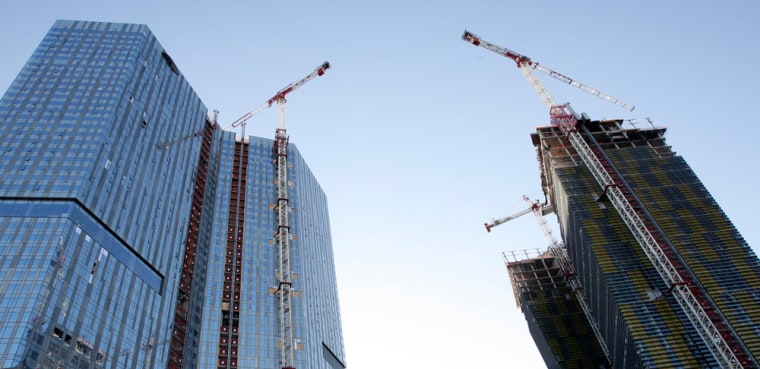Even as banks grapple with rising foreclosures, many lenders have something else to worry about: A rising tide of potential losses from commercial real estate loans that could reach into the billions.
Delinquency rates and defaults on office and retail buildings and hotels have more than doubled in just six months. For apartments and industrial buildings, the rates have increased more than 80 percent, according to Reis Inc.
While homeowners are defaulting at almost four times the rate of commercial landlords, the sudden spike in late payments has many industry insiders worried about the collateral threat to the economy and financial system. Nearly $73 billion worth of commercial real estate loans are in some level of financial distress, according to Real Capital Analytics.
The risk to the economy is unknown, but likely underestimated in the government's stress test of 19 major banks. The results released last week projected that should the recession worsen, the losses from commercial real estate loans could hit $53 billion, or 8.5 percent of their overall loan losses over the next two years.
The exercise notably left out the majority of the regional and local lenders, which hold a big chunk of the nation's $3.5 trillion commercial property loans on their books and remain vulnerable.
Pressure rising
"Because of the severity of the economic downturn, now the pressure ... for commercial real estate, is much higher," said Hessam Nadji, managing director at Marcus & Millichap Real Estate Investment Services.
The economy has forced many businesses to downsize and others like Linens 'N Things and Circuit City to go out of business. That's left behind empty storefronts, office buildings and warehouse space.
Landlords are finding it hard to attract new tenants. Increasingly, they are slashing rents or offering incentives like money for tenant renovation. Tenants, likewise, have also become more aggressive about demanding concessions from landlords.
Starbucks, for example, recently pressed its landlords to renegotiate the rents for leases at company operated stores. The coffee chain declined to say what kind of deals it obtained, but said it is pleased with the outcome.
While interest rates have declined, commercial property owners are having difficulty refinancing their loans because credit markets remain frozen.
And that's what is worrying people like Kyle McLaughlin.
Overall, some $270.5 billion commercial property loans are expected to come due this year alone, said McLaughlin, a financial analyst for Reis. And it's likely many borrowers won't be able to refinance.
That's what snagged General Growth Properties, the nation's second-largest shopping mall owner. Unable to pay or restructure its debts, the company sought shelter from creditors last month, making it the largest U.S. real estate bankruptcy in history.
Real estate experts are concerned financially strapped landlords from General Growth to General Motors may have to sell property at bottom-dollar prices. On Monday, General Motors said it may sell the Renaissance Center in downtown Detroit, which not only includes the automaker's headquarters, but also hotels, restaurants and more than a dozen shops.
As many homeowners know, sales of foreclosures and other distressed properties can create a downward spiral for similar properties in the neighborhood. Vacant commercial buildings, like vacant homes, also invite vandals and vagrants.
Troubled Las Vegas
Marcus & Millichap projects U.S. vacancy rates this year for office space will hit 17.6 percent; 10.9 percent for retail; 12.6 percent for industrial; and 7.7 percent for apartments.
Las Vegas accounted for the biggest slice of troubled commercial properties of any metro area.
"Twenty-four percent of the Las Vegas commercial market is in distress," said Jessica Ruderman, a senior market analyst with Real Capital Analytics.
Apartments account for most of Sin City's troubled properties. The only market that even comes close to is Detroit, with 20 percent of its commercial properties in distress.
On Friday, Fannie Mae said apartment building loans that were at least 90 days past due almost quadrupled between December and March to a rate of 0.34 percent.
As a result, Fannie Mae's credit-related expenses for apartment loans jumped to $542 million from $59 million at the end of last year. The company said its troubled loans are concentrated in Florida, Arizona, Georgia, Texas and New York.
Apartment loans are expected to rise further as unemployment climbs, leaving landlords struggling to fill vacancies and make their mortgage payments.
"The apartment market really trails the economy; we're just now in the midst feeling the effects of these extreme job losses that started back in October of last year," Nadji said. "And even if the job losses were going to stop tomorrow, the ripple effect will take a few months to show up in the commercial markets."
